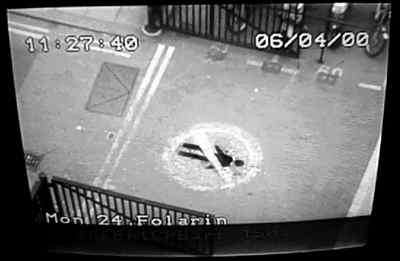Gallery Regulations

The democratic education of the mob was an attempt to addict them
to the aspirational tastefulness of Victorian Society. For the new
social elite, sharing what had previously been private, exposing
what had been concealed, became a totem of progressiveness. The
Tate, with a more or less free admission policy, surgically removed
the decadence and tyranny before offering the morsels of taste generated
under previous forms of social control.
Current Tate Regulations:
- You may be requested to deposit briefcases, bags, sticks or umbrellas in the
Cloakroom. Large bags and rucksacks must be deposited in the Cloakroom.
- Works of art must be deposited in the Cloakroom. All articles are deposited at the owner's risk.
- Money and other valuables should not be left in the Cloakroom.
- Food and drink may not be consumed in the galleries.
- Smoking is not allowed anywhere in the galleries except signed areas of the Restaurant.
- Mobile phones may not be used in exhibition or display areas.
- Potentially harmful substances (eg. aerosols, solvents, glues and dyes) and implements (eg. knives, scissors) should not be brought into the galleries.
- Please do not touch the works of art on display.
- Dogs are not admitted: Guide dogs and Hearing dogs for the Deaf are welcome.
- The use of cameras and video recorders by visitors is not permitted within the Tate galleries. Permission may be granted to photograph for private study and research; please enquire at the Information Desk at the main entrance for details.
- Sketching of artwork on display is allowed using small drawing pads, enclosed pencils or crayons. The use of charcoal, pastels, permanent markers and water or oil is not allowed in the galleries.
- Please respect the rights of other visitors to quiet contemplation and study. In the case of noisy or other improper behaviour, or breach of these regulations, the offender will be liable to immediate expulsion from the Gallery.
- In the interests of security visitors' bags may be searched. It may at times be necessary to close the doors of the Gallery, every effort will be made to limit this inconvenience.
The museum provides a solution to the social chaos of the street:
a site where bodies, constantly under surveillance, could be rendered
docile through exposure to Gainsborough, Turner, Hogarth. instead
of the jailer's whip and bludgeon. If the prison changed you through
discipline and punishment, then the museum was a way to show and
tell so that we might look and learn. The purpose, here, was not
to know about people's culture but to address people as the subjects
of that culture. Not to make the population visible to power but
to render power visible to the people and, at the same time, to
represent to them that power as if it were their own. The museum
became, and is still, a technical solution to the problem of displaying
wealth and power without the attendant risks of social disorder.
|




